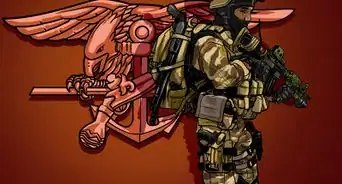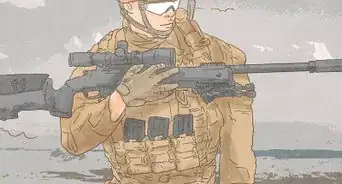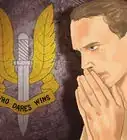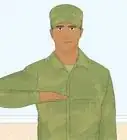This article was co-authored by wikiHow Staff. Our trained team of editors and researchers validate articles for accuracy and comprehensiveness. wikiHow's Content Management Team carefully monitors the work from our editorial staff to ensure that each article is backed by trusted research and meets our high quality standards.
This article has been viewed 23,821 times.
Learn more...
If you have a passion for flying and want to serve the United Kingdom, you may want to become a Royal Air Force pilot. This is a very noble and exciting career to pursue, although it takes some work to become a pilot. In addition to meeting the requirements for enlisting in the RAF, you also have to undergo rigorous specialized training in order to become a full pilot.
Steps
Meeting Enlistment Requirements
-
1Make sure you’ve been a UK resident for at least 5 years. Additionally, you cannot have spent more than 28 days per year outside of the United Kingdom during those years. If you have, you will have to undergo more eligibility checks when you go to enlist.[1]
- For instance, if you spend 27 days each year on vacation, this is fine. However, if you spend 29 or more days in a single year out of the country, you will need to explain the reason for your travel on your application.
- The additional eligibility checks will involve providing documentation such as your birth certificate and passport, as well as your educational qualifications (e.g., a higher education degree).
- In addition to these residency requirements, you must also be a citizen of the United Kingdom by the time of your enlistment. You can meet this requirement by being a British citizen or national, holding dual citizenship with the UK and another country, or being a citizen of the Commonwealth.
-
2Note that you have to be between 17 and 25 to become a pilot. Specifically, you have to be at least 17.5 years old, but no older than 25, in order to apply for pilot training school. If you’re under the age of 18, you’ll need to obtain consent from a parent or guardian before enlisting.[2]
Tip: If you fall outside of this age range, there may be other positions in the RAF that you’re still eligible for! Speak with a recruiter to find out what other options are available to you.
Advertisement -
3Pass your secondary education exams in at least 5 subjects. To become a RAF pilot, you need to have your General Certificates of Secondary Education (GCSEs) at Grade C or above in English, Maths, and at least 3 other subjects. In addition, you also need to have taken at least 2 A2 Level exams and have earned a minimum of 64 Universities and Colleges Admissions Service (UCAS) points.[3]
- Note that most schools require their pupils to pass 5 GCSE exams with a Grade C or higher before they can move on to A2 Level exams.
- There are no requirements for specific exams that you have to take to become an RAF pilot other than the English and Maths exams.
-
4Be willing to commit to 12 years of service in the Royal Air Force. This is the minimum length of service that the RAF requires for pilots. Of course, you also have the option to commit to serving for more than this period of time and will be able to re-up your service after 12 years if you’ve remained in good standing in the RAF.
Enlisting in the RAF
-
1Visit the RAF website to begin the application process. On the RAF’s recruitment website, fill out the registration information, including your email address, and an invitation will be sent to that email. Once you receive this invitation, you’ll be able to start your full application online.
- The URL for the RAF’s recruitment website is: https://www.raf.mod.uk/recruitment.
-
2Pass 2 physical fitness tests to demonstrate your physical health. Once you’ve submitted your enlistment application, you’ll be required to undergo at least 2 fitness tests and meet the minimum benchmarks for your sex and age. These tests include a combination of a 2.4 km (1.5 mi) treadmill run, press-ups (or push-ups), and sit-ups.
- Male applicants must complete their run within 11:11 minutes, perform 20 press-ups, and do 35 sit-ups.
- Female applicants have to finish their run inside 13:23 minutes, do 10 press-ups, and do 32 sit-ups.
-
3Have your eyesight and body mass index assessed. Medical professionals will determine whether you have sufficient sight and body health to serve effectively in the military. If your BMI is outside of the acceptable range, your application will be rejected.
- For applicants younger than 18, the acceptable BMI range is 17 to 27. For applicants 18 and older, the acceptable BMI range is 18 to 28.
-
4Undergo a background check to obtain Security Check level clearance. This is a basic background check to determine whether there are any disqualifying factors in your history that would bar you from serving in the RAF. In addition to a background check, you will also be required to declare any previous unspent convictions you have.[4]
- Note that some roles in the RAF also require applicants to disclose any spent convictions in their history up front.
- Examples of disqualifying factors can include membership in an extremist group, articulation of extreme political affiliations, and offensive tattoos.
Tip: You are technically allowed to have inoffensive tattoos if you’re serving in the RAF. However, they must not be visible above the neck collar or below the sleeve cuff.
-
5Complete a series of tests and interviews to demonstrate your aptitude. The tests will be carried out on computers at the Officers and Aircrew Selection Centre (OASC) and will assess your task completion skills, deductive reasoning, and concentration. The 2 interviews will be focused on your past education, your interest in the RAF, and how well you project confidence and leadership abilities.
- Be sure to give answers during the interviews that highlight your qualities and past achievements. The interviewers’ goal is to assess how good of a fit you are for a leadership position in the RAF.
- These are the final steps in the Pilot Selection Process and will take place at the Officers and Aircrew Selection Centre (OASC).
Undergoing Pilot Training
-
1Start with Initial Officer Training to develop your leadership skills. This is a 24-week training regimen that focuses on leadership and management training from RAF personnel, as well as basic military studies. IOT is broken up into 3 different terms, each of which you’ll have to successfully complete before being able to move on to the next.
- IOT training takes place at the ROF College Cranwell in Lincolnshire.
-
2Move on to Elementary Flying Training to begin your specialist training. In EFT, students are taught the basics principles of flight, aircraft technology, and meteorology. You’ll then move on to learn some of the more direct skills involved in flying, such as taking off and landing.
- During EFT, students fly either the Tutor or Prefect aircraft.
- The more advanced skills you’ll learn through EFT include instrument flying, aerobatics, formation flying, and navigation.
-
3Stream into a more specific class of aircraft to continue your training. After you finish EFT, you’ll be streamed into 1 of 3 different training types: fast jet, multi-engine, or rotary. You will be able to give your preference as to which type of training you go into, but where you’re streamed will ultimately be decided by your trainers.
- Those who go into fast jet training are trained to fly fast jet-engine aircraft such as fighter jets. Multi-engine training prepares pilots to fly large multi-engine aircraft. Those who go into rotary training are taught to fly helicopters.
References
- ↑ https://www.telegraph.co.uk/business/boeing-uk/how-to-become-a-pilot/
- ↑ https://www.pilotcareernews.com/learn-to-become-a-career-pilot-and-not-pay-a-penny-for-training/
- ↑ https://www.pilotcareernews.com/learn-to-become-a-career-pilot-and-not-pay-a-penny-for-training/
- ↑ https://www.raf.mod.uk/recruitment/how-to-apply/eligibility-check/
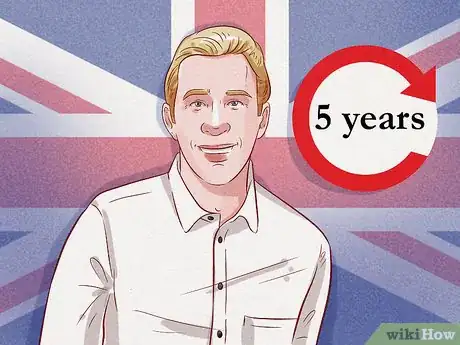
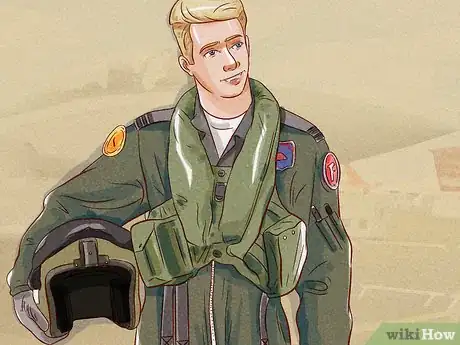
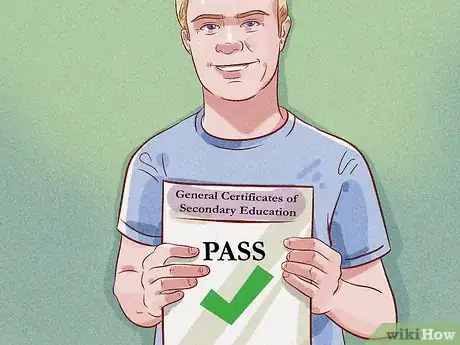
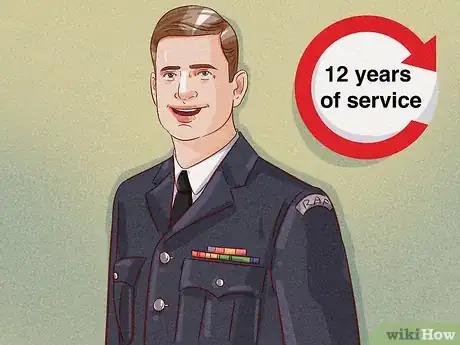
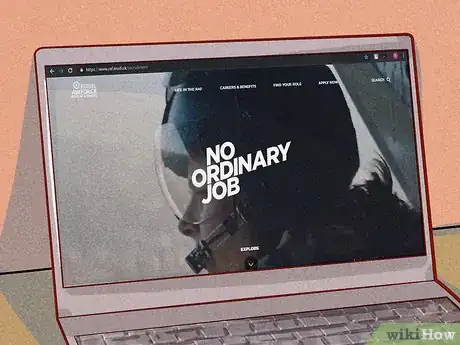
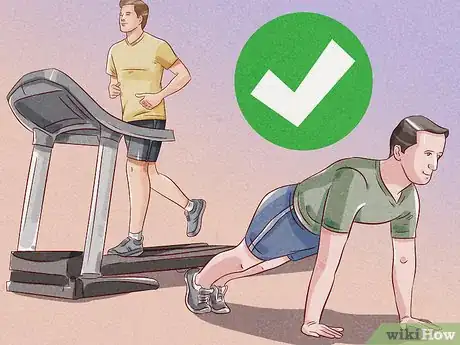

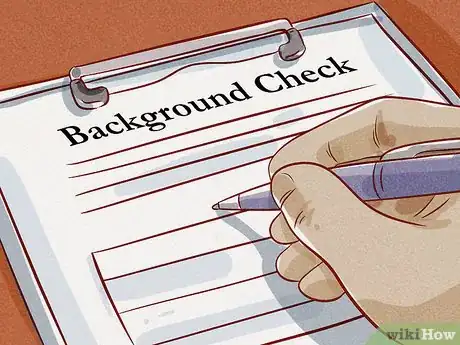
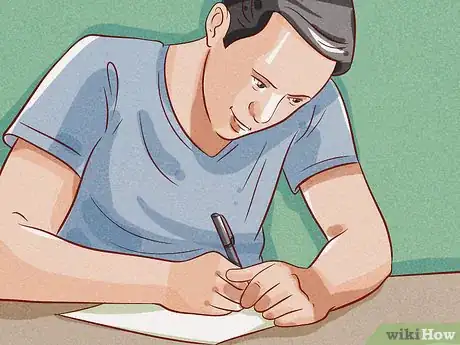
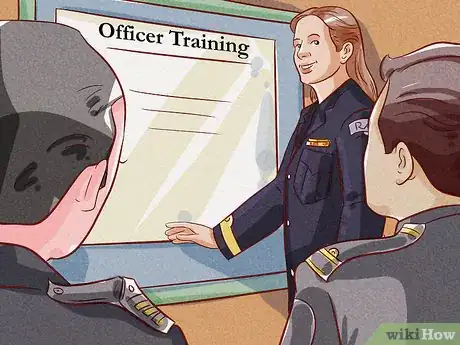
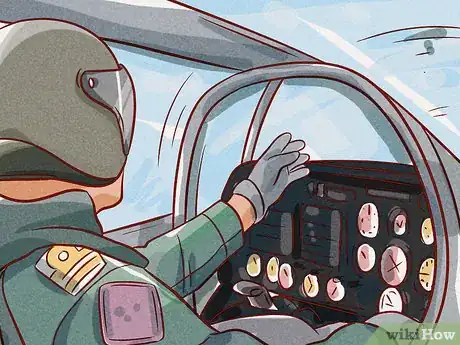
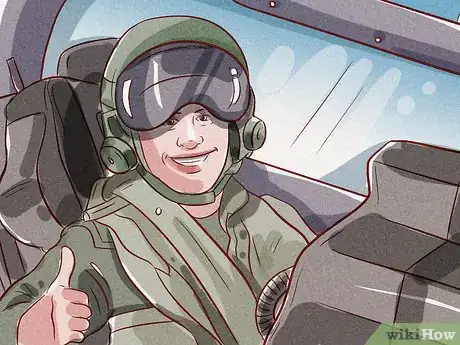

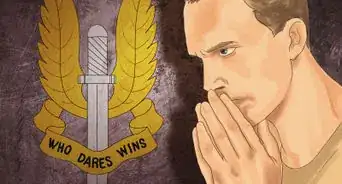



-Step-10-Version-3.webp)




